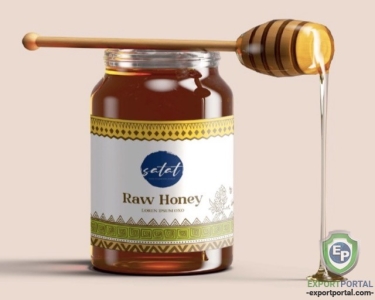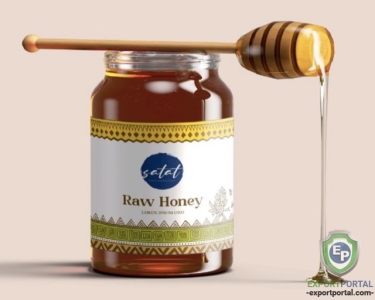Couldn't find the product you want?
Fill out this form to request the product.
Honey has been used by countless cultures all around the world over the past 2,500 years and no wonder! Over its history as a food, the main uses of honey are in cooking, baking, desserts, such as mel i mat, as a spread on bread, and as an addition to various beverages, such as tea, and as a sweetener in some commercial beverages. Honey barbecue and honey mustard are other common flavors used in sauces. Honey is truly a remarkable substance, made even more extraordinary by the process with which it is made. This blend of sugar, trace enzymes, minerals, vitamins, and amino acids is quite unlike any other sweetener on the planet. Also, many honey's health benefits have made it an important element of traditional medicines and scientists also are convinced of honey medicinal value.
Honey has been valued as a natural sweetener long before sugar became widely available in the 16th century. Honey production flourished in ancient Greece and Sicily. Nowadays it's China, Turkey, and Argentina that are the top producers of honey, followed by Ukraine and the United States. Mexico is also an important producer of honey, providing more than 4% of the world's supply. Most of Mexico's Yucatn producers are small, family operations who use original traditional techniques, moving hives to take advantage of the various tropical and subtropical flowers. At Export Portal are presented all the types of honey from all the quality honey producers of the world. We have suppliers of honey from all the countries.
Buying honey can be a tricky process if you don't know what signs of a good hony quality to look fo. We will help you understand what are the indicators of quality of honey.
- High-quality honey can be distinguished by fragrance, taste, and consistency. Ripe, freshly collected, high-quality honey should flow from a knife in a straight stream, without breaking into separate drops. After falling down, the honey should form a bead. The honey, when poured, should form small, temporary layers that disappear fairly quickly, indicating high viscosity. If not, it indicates excessive water content (over 20%) of the product. Honey with excessive water content is not suitable for long-term preservation.
- Crystallized honey, also called "granulated honey" or "candied honey" is not bad, either, it's just honey in which some of the glucose content has spontaneously crystallized from solution as the monohydrate. Honey that has crystallized can be returned to a liquid state by warming.
- Pasteurized honey is honey that has been heated in a pasteurization process which destroys yeast cells. It also liquefies any microcrystals in the honey, which delays the onset of visible crystallization. However, excessive heat during the pasteurization affects appearance - it darkens the natural honey color, changes the taste and fragrance.
We have prepared a classification of honey to help you understand which kinds of honey are there and how they differ. Honey is classified by its floral source, and there are also divisions according to the packaging and processing used. There are also regional honeys. Let's see:
- Usually, honey is classified by the honey's floral source of the nectar from which it was made. Honey is traceable to floral source and therefore region of origin.
- Blended honey means that it is a mixture of two or more honeys differing in floral source, color, flavor, density or geographic origin.
- Polyfloral honey, also known as wildflower honey, derives from the nectar of many types of flowers. The taste may vary from year to year, and the aroma and the flavor can be more or less intense, depending on which bloomings are prevalent.
- Monofloral honey is made primarily from the nectar of one type of flower. Different monofloral honeys have a distinctive flavor and color.
- Honeydew honey is made when instead of taking nectar, bees take honeydew, the sweet secretions of aphids or other plant sap-sucking insects. Honeydew honey is very dark brown in color, with a rich fragrance of stewed fruit or fig jam, and is not as sweet as nectar honeys.
There is also a classification of honey by packaging and processing you should be aware of when buying honey. Generally, honey is bottled in its familiar liquid form, but can be sold in other forms, as well it can be subjected to a variety of processing methods.
- Raw honey is honey as it exists in the beehive or as obtained by extraction, settling or straining, without adding heat - although some honey that has been "minimally processed" is often labeled as raw honey. Raw honey contains some pollen and may contain small particles of wax.
- Filtered honey is very clear and will not crystallize as quickly, making it preferred by the supermarket trade.
- Ultrasonicated honey has been processed by ultrasonication, a non-thermal processing alternative for honey. When honey is exposed to ultrasonication, most of the yeast cells are destroyed.
- Creamed honey, also called whipped honey, spun honey, churned honey, has been processed to control crystallization. Creamed honey contains a large number of small crystals, which prevent the formation of larger crystals that can occur in unprocessed honey. The processing also produces a honey with a smooth, spreadable consistency.
- Dried honey has the moisture extracted from liquid honey to create completely solid, nonsticky granules. This process may or may not include the use of drying and anticaking agents. Dried honey is used in baked goods, and to garnish desserts.
- Comb honey is honey still in the honeybees' wax comb. It traditionally is collected by using standard wooden frames in honey supers. The frames are collected and the comb is cut out in chunks before packaging. As an alternative to this labor-intensive method, plastic rings or cartridges can be used that do not require manual cutting of the comb, and speed packaging. Comb honey harvested in the traditional manner is also referred to as "cut-comb honey".
- Chunk honey is packed in widemouth containers consisting of one or more pieces of comb honey immersed in extracted liquid honey.
Now you know everything there is to know about honey and can start choosing a variety of honey to buy from our online food and agricultural produce market. We have all the best honey presented: buy organic honey, buckwheat honey, acacia honey, medical honey, honeycomb honey, find white honey and wildflower honey, unpasteurized honey or unprocessed honey, buy local honey in your country, choose clover honey and chestnut honey and all other kinds!

